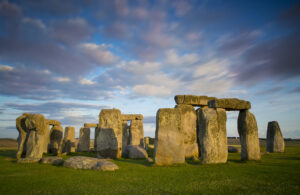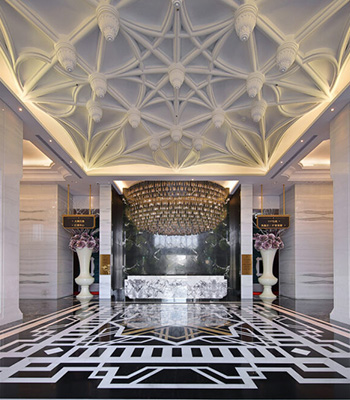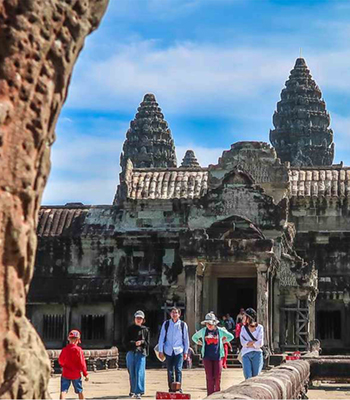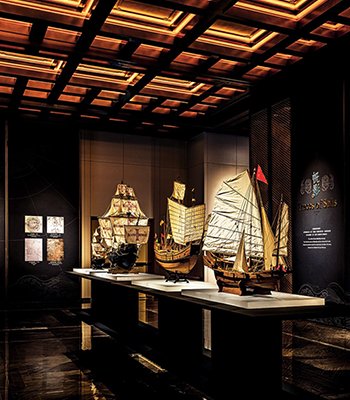
世界文化遺產觀光與永續經營
它有助於在地方,區域和國家各級觀光營收,旅遊業和遺產互動都受益。
旅遊業為了解遺產的重要性提供了機會,而遺產旅遊為開展良好的商業活動提供了投入。對於其他經濟活動範圍有限的農村和偏遠地區,遺產文化旅遊業非常重要。但是,與遺產遺址相關的研究表明,旅遊業的業績低於平均水平,且做法不可持續。大多數文物古蹟(在遊客中很受歡迎)都受到威脅,需要進行救援行動。這就需要以可持續的方式解決這個問題。本文試圖對遺產旅遊的概念及其與可持續旅遊的關係進行描述。
Heritage tourism like any other form of tourism generates business activities and influence local economy positively (Dwyer, Forsyth and Spur, 2004). It contributes in revenue generation at local, regional and national level. Tourism and heritage interaction benefits both. Tourism provides opportunity to aware about the importance of heritage while heritage tourism offers input for a sound business activity. Heritage tourism is very significant for rural and remote areas where scope of other economical activities is limited. However, researches related to heritage sites indicate a below average performance of tourism business and with unsustainable practices. Most of heritage sites (which are popular among tourists) were found under threat that requires rescue operations (Bramley, 2001; Davidson and Spearritt, 2000; Fallon and Kriwoken, 2003; Frost, 2003 & 2005; McKercher, 2001; Prideaux and Kininmont, 1999; Young, 2006). This makes a need to address the issue on sustainable lines. The present paper tries to provide a description on concept of heritage tourism and its relationship with sustainable tourism.

世界文化遺產觀光
根據世界貿易組織(Richards,2000年)的說法,傳統旅遊是旅遊業中非常重要的部分,正在迅速發展,佔全球旅遊活動的37%。遺產,文化和歷史旅遊包括所有涉及文化活動和與當地人互動的遊客旅行。本研究的本節討論遺產旅遊的一些公認的定義。根據教科文組織的說法:
「遺產是我們過去的遺產,是我們今天所生活的,也是我們傳給後代的遺產。我們的文化和自然遺產都是生活和靈感的不可替代的來源。」
1993年,Prentice解釋了「遺產」一詞,包括自然歷史,建築,景觀美化,文化傳統,人工製品以及從一代到另一代的所有隱喻和字面意義(可以轉化為旅遊產品)。他還嘗試按照遺產類型對遺產遺址進行分類:自然遺產,建築遺產和文化遺產。這種解釋似乎與視覺吸引力,節日和表演藝術有關。 Zeppel and Hall(1992)表示:遺產旅遊是專業旅遊的廣闊領域,其基礎是對過去的懷舊和渴望體驗多種文化景觀和形式的渴望。它包括參加節日和其他文化活動,參觀遺址和古蹟,學習自然,民俗或藝術或朝聖。根據Nuryanti(1996)的說法,「遺產」一詞的廣義含義通常與繼承一詞聯繫在一起,即從一代傳到另一代。由於其作為過去歷史價值的載體,遺產被視為社會文化傳統的一部分。 Poria,Butler和Airey(2001)將遺產旅遊描述為:
「旅遊的一個子類別,其中參觀某個景點的主要動機是基於該地點的「遺產特徵」,根據遊客對自己遺產的感知」。 歷史旅遊業可以定義為旅遊的一個子類別,其中游覽某個地方的動機基於其歷史屬性(2001年,第1048頁)。另一方面,文化旅遊被解釋為是由本地人以外的遊客完全或部分地出於對一個地區,地區,社會團體或機構的藝術,歷史,生活方式,遺產提供等的興趣而進行的旅行(Silberberg,1995 )。 Hall和Zeppel,1990年還發現,基於視覺藝術,表演藝術和節日的參與和刺激,文化旅遊可以稱為體驗式旅遊。該領域的大多數學者都認為,遺產和文化旅遊包括對以文化和遺產為導向的設施的訪問,這些設施可以有水族館,博物館,考古遺址,表演藝術中心,歷史遺址,城堡,劇院,宗教中心和建築文物等。 許多文學研究都交替使用遺產和文化旅遊,本研究也是如此。
According to the WTO (Richards, 2000), heritage tourism is very important segments of tourism industry which is growing rapidly and representing 37 % (approx.) of global tourism activities. Heritage, Cultural and Historical tourism includes all tourist trips which involves cultural activities and interaction with locals. The present section of this study discusses some of the widely accepted definition of Heritage Tourism. According to UNESCO:
“Heritage is our legacy from the past, what we live with today, and what we pass on to future generations. Our cultural and natural heritages are both irreplaceable sources of life and inspiration.”

In 1993, Prentice explained “heritage” term and included natural history, building, landscaping, cultural traditions, artifacts and all those metaphorically and literally (which can be transformed into tourism products) which passed from one generation to other in it. He also tried to categories the heritage sites in term of heritage types: natural, built and cultural heritage. This explanation seems tied to visual attraction, festivals and performing arts. Zeppel and Hall, (1992) stated that “Heritage tourism is a broad field of specialty travel, based on nostalgia for the past and the desire to experience diverse cultural landscapes and forms. It includes travel to festivals and other cultural events, visit to sites and monuments, study to nature, folklore or art or pilgrimage”. According to Nuryanti, (1996), the word “heritage” in its broader meaning is generally associated with the word “inheritance,” that is, something transferred from one generation to another. Owing to its role as a carrier of historical values from the past, heritage is viewed as part of the cultural tradition of a society. Poria, Butler, and Airey (2001) described heritage tourism as:
„A subgroup of tourism in which the main motivation for visiting a site is based on the place‟ Heritage characteristics according to the tourists‟ perception of their own heritage‟…. „Historic tourism may be defined as a subgroup of tourism in which the motivation for visiting a place is based on its historic attributes‟ (2001, p.1048)
On other hand, cultural tourism is explained as a tour by visitor from outside the local area motivated wholly or partially by interest in the artistic, historical, lifestyle, heritage offerings etc. of a locality, region, social group or institution (Silberberg, 1995). Hall and Zeppel, 1990 also revealed that cultural tourism can be referred as experiential tourism based on the fact that involvement and stimulation by the visual arts, performing arts, and festivals. Most of the scholars of the field accept that heritage and cultural tourism includes the visits to the cultural and heritage oriented facilities which can have aquarium, museum, archeological digs, performing art centers, historical sites, castles, theatre, religious centers and architectural relics etc. A number of studies in literature have used heritage and cultural tourism interchangeably and same is true for present study.

遺產觀光與可持續發展
遺產旅遊的文獻側重於教育和文化方面,而主張可持續旅遊的學者則很少關注遺產的保護和保存(Anoeld 1994; Cope 1995; Croft 1994; Johnson and Thomas 1995; van der Borg,Costa and Gotti 1996)。遺產旅遊業和可持續旅遊業都基於同一個主題,即資源的長壽命尚未吸引任何研究來評估彼此之間的關係。可持續旅遊業被定義為一項活動,可以保證「我們將自然和建成的資本資產的存量傳遞給下一代,但要少於我們現在擁有的存量」(Pearce 1992)。耶魯大學(Yale,1991)指出,遺產旅遊業是以我們繼承的遺產為中心的旅遊業,它可以指的是從歷史建築,藝術品到美麗的風景。兩種定義的基本主題都與固有性有關,但令人驚訝的是,迄今為止尚未開發出兩種旅遊類型的關聯。
傳統旅遊仍然採用策展方法(Goulding 1996),其主要重點在於維護保養,而公共訪問和財務償付能力是第二優先選擇。直到今天,許多遺產管理者都不認為自己從事旅遊業(Croft 1994)。一些人似乎對遊客的注意力分散了,因為他們分散了他們與保護相關的目標(Thomas 1998)。但是,政府減少了對這些遺產的援助,迫使它們促進旅遊業的創收活動。旅遊活動的負面影響和自然衰落是當代遺址的主要問題(English Tourist Board 1991b)。 用戶付費原則已經倡導並廣泛接受了可持續性(Burns和Holden,1995; Forsyth,Dwyer和Clarke,1995; Laarman和Gregersen,1996),但許多遺址對遊客收取的象徵性價格是否足以證明充分感到困惑。社會成本(Pearce,Markandya和Barbier 1989)。但是在目前情況下,由於資金匱乏,否認參觀價格”的概念將導致遺產遺址的實際破壞。遺產管理者不願執行用戶付費原則,原因有兩個:
1)實施該原則可以促進遺產的共同修改(Newby 1994)。但是,從根本上講,這是超出價格的。過去和現在的文化價值觀不得為了商業化而受到損害。
2)開展更廣泛的任務與提高人們對遺產遺址的認識和費用有關;可能會阻止一部分遊客參加這種實現意識形態信仰的活動(Curtis 1998; Glaister 1998; Leask and Goulding 1996)。甚至文學調查也無法回答這個問題。應處理遺產與可持續旅遊業之間的關係,以便為子孫後代確保保護。
本文討論了遺產旅遊的各種定義,發現從過去繼承的任何有形和無形物品都可以作為遺產旅遊的來源,基於可持續性方法對其進行保護是當代的需要。 該研究詳細討論了“用戶付費本金”的相關性,並發現作為主要利益相關者的政府應為保護這些文化遺產投入足夠的資金,以實現與在當地人和遊客中提高認識有關的目標。 未來的研究有足夠的空間來研究可持續性與傳統旅遊的關係。
The literature on heritage tourism focuses on education and culture, while scholars who advocate sustainable tourism pay little attention to the protection and preservation of heritage (Anoeld 1994; Cope 1995; Croft 1994; Johnson and Thomas 1995; van der Borg, Costa and Gotti 1996 ). Both heritage tourism and sustainable tourism are based on the same theme, that the longevity of resources has not yet attracted any research to assess the relationship between each other. Sustainable tourism is defined as an activity that guarantees that “we pass on to the next generation the stock of [natural and built] capital assets, but less than the stock we have now” (Pearce 1992). Yale University (Yale, 1991) pointed out that heritage tourism is “tourism centered on our inherited heritage, which can refer to everything from historical buildings and artworks to beautiful scenery.” The basic themes of both definitions are related to inherentity, but surprisingly, the association between the two types of tourism has not been developed so far.

Traditional tourism still uses the “curatorial approach” (Goulding 1996), and its main focus is on maintenance, while public visits and financial solvency are the second priority. To this day, many estate managers do not consider themselves to be engaged in “tourism” (Croft 1994). Some people seem to be distracted by tourists because they distract from their conservation-related goals (Thomas 1998). However, the government reduced aid to these heritages, forcing them to promote income-generating activities in the tourism industry. The negative effects of tourism activities and natural decline are the main problems of contemporary sites (English Tourist Board 1991b). The “user pays principle” has been advocated and widely accepted for sustainability (Burns and Holden, 1995; Forsyth, Dwyer and Clarke, 1995; Laarman and Gregersen, 1996), but whether the symbolic prices charged by many sites to tourists are sufficient to prove “ Fully” confused. Social costs” (Pearce, Markandya, and Barbier 1989). However, in the current situation, due to lack of funds, denying the concept of “visiting price” will lead to the actual destruction of the heritage site. Heritage managers are unwilling to implement the “user pays principle” for reasons There are two:
1) The implementation of this principle can promote the joint modification of the heritage (Newby 1994). But fundamentally speaking, this is beyond the price. The cultural values of the past and present must not be compromised for commercialization.
2) Carrying out a broader task is related to raising people’s awareness and costs of heritage sites; it may prevent some tourists from participating in such ideological belief activities (Curtis 1998; Glaister 1998; Leask and Goulding 1996). Even literary surveys cannot answer this question. The relationship between heritage and sustainable tourism should be dealt with in order to ensure protection for future generations.
This article discusses various definitions of heritage tourism. It is found that any tangible and intangible objects inherited from the past can be used as a source of heritage tourism. It is a contemporary need to protect it based on sustainable methods. The study discussed in detail the relevance of “user-paid principal” and found that the government, as the main stakeholder, should invest sufficient funds to protect these cultural heritages in order to achieve goals related to raising awareness among locals and tourists. There is enough room for future research to study the relationship between sustainability and traditional tourism.
結論
本文討論了遺產旅遊的各種定義,發現從過去繼承的任何有形和無形物品都可以作為遺產旅遊的來源,基於可持續性方法對其進行保護是現代迫切的需要。 該研究詳細討論了“使用者付費”的相關性,並發現作為主要利益相關者的政府應為保護這些文化遺產投入足夠的資金,以實現與在當地人和遊客中提高認識有關的目標。 未來的研究有足夠的空間來研究可持續性與傳統旅遊的關係。
This paper discussed various definitions of heritage tourism and found that any tangible and intangible item inherited from past can be source for heritage tourism and its preservation based upon sustainability approach is need of contemporary time. The study has discussed the relevance of „user pay principal‟ in detail and found that Government, being major stakeholder should direct adequate funding for preservation of these heritage sites in order to achieve the objectives related to awareness creation among locals and tourists. Future researches have ample space to investigate the relationship of sustainability and heritage tourism.

文/Dr. Ranbir Singh
提供/Prof. Markus Pillmayer
圖/Website Resource
























